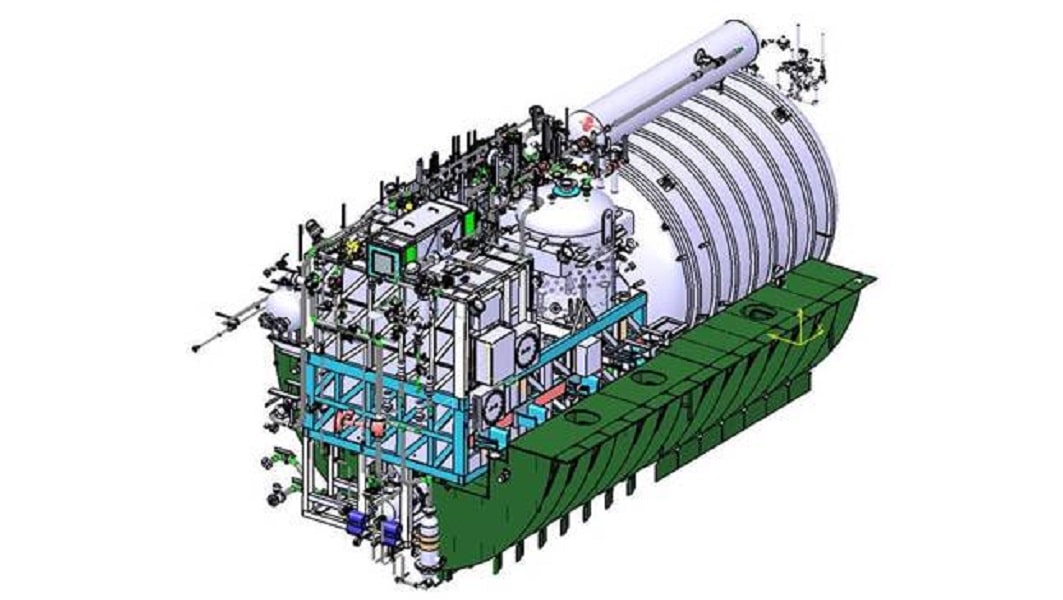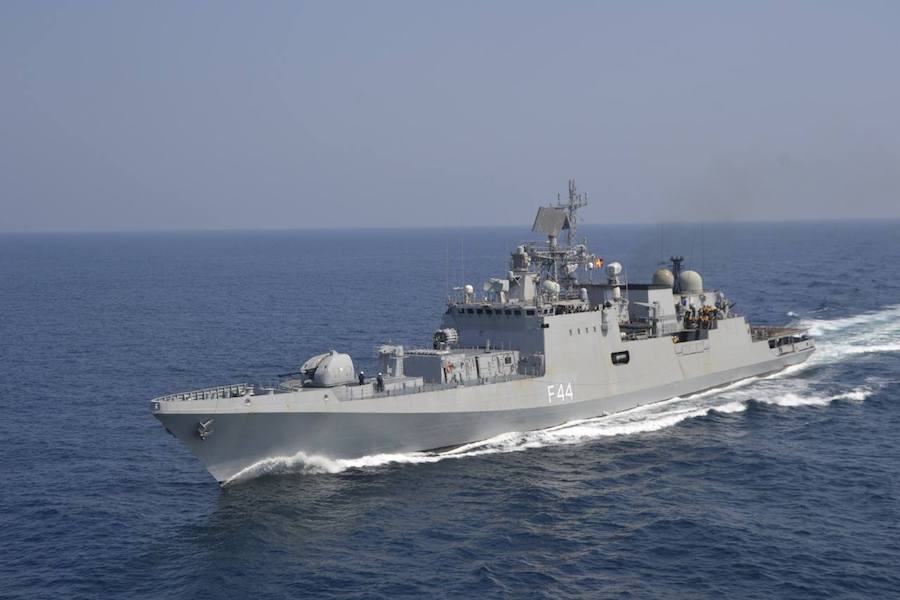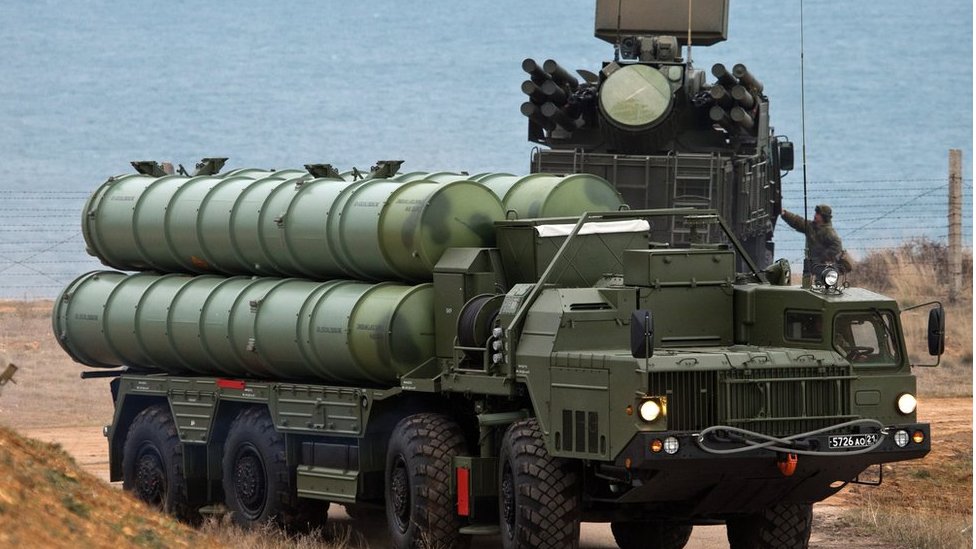News Beat
News Beat reporting is an idrw.org initiative to let our Readers to report News Based on Actual facts but some how has not been reported in Main Stream Media .
SOURCE: RAUNAK KUNDE / NEWS BEAT / IDRW.ORG

India’s Defense Research and Development Organisation (DRDO) is making significant strides in underwater warfare technology with the development of an advanced Air-Independent Propulsion (AIP) module. This innovative system promises to significantly enhance the endurance and capabilities of Indian submarines.
The DRDO’s AIP module utilizes phosphoric acid fuel cells, each generating a robust 13.5 kW of power. While this output meets the immediate needs of the Kalvari-class submarines (currently requiring up to 15.5 kW), DRDO is setting its sights even higher. Recognizing the need for future submarine classes like the P-76, they’re spearheading the development of a larger AIP module capable of generating a scaled-up 20 kW.
Continue readingSOURCE: RAUNAK KUNDE / NEWS BEAT / IDRW.ORG

The Indian Navy has unveiled its vision for the Jalkapi, a next-generation Autonomous Underwater Vehicle (AUV) designed for extended underwater survey missions. This ambitious project aims to provide the Navy with a powerful tool for gathering critical data from the depths of the ocean.
The Jalkapi boasts an impressive mission endurance of 45 days at sea. This extended operational capability is achieved through onboard recharging using a diesel generator, allowing the AUV to replenish its batteries and continue its mission without needing to return to a support vessel.
Continue readingSOURCE: RAUNAK KUNDE / NEWS BEAT / IDRW.ORG

The Defence Research and Development Organisation (DRDO) is taking its Smart Anti-Airfield Weapon (SAAW) program to new heights. Plans are underway to transform the SAAW into a mini air-launched cruise missile (ALCM) variant, significantly enhancing its capabilities.
The existing SAAW is an unpowered weapon, relying on glide for target acquisition. The new ALCM variant will be equipped with a mini turbojet engine, enabling powered flight and a substantial increase in operational range. This upgrade is expected to push the range beyond 200 kilometres, compared to the 100 kilometres of the current SAAW EQ variant.
Continue readingSOURCE: RAUNAK KUNDE / NEWS BEAT / IDRW.ORG

The Indian Air Force (IAF) is intensifying its efforts to expedite the procurement of 114 Multi-Role Fighter Aircraft (MRFA). The force has urged the Ministry of Defence (MoD) to prioritize the Acceptance of Necessity (AoN) for the MRFA tender, which has been pending since last year.
The AoN is crucial as it grants budgetary approvals necessary to fund the program. With this clearance, the IAF can proceed with issuing a Request for Proposal (RFP) to interested global aviation giants. The tender has already seen participation from around eight contenders in the initial Request for Information (RFI) phase issued over five years ago. The RFP will provide an opportunity for these companies to reassess their offerings and either submit more competitive bids or withdraw from the competition.
Continue readingSOURCE: RAUNAK KUNDE / NEWS BEAT / IDRW.ORG

Hindustan Aeronautics Limited (HAL) is in the final stages of preparing its price bid for the acquisition of 97 additional Light Combat Aircraft (LCA) Tejas Mark-1A fighter jets. The Defence Ministry had issued a Request for Proposal (RFP) for these aircraft in April this year.
The procurement of these additional Tejas aircraft is a significant step towards bolstering the Indian Air Force’s (IAF) combat capabilities. The Defence Acquisition Council (DAC) had already granted its approval for the acquisition in November 2023.
Continue readingSOURCE: RAUNAK KUNDE / NEWS BEAT / IDRW.ORG

The Defence Research and Development Organisation (DRDO) has announced a new project under its Technology Development Fund (TDF) scheme. This initiative seeks collaboration with an innovative Indian startup to develop Segmented Rubber Tracks (SRT) for India’s fleet of armoured fighting vehicles.
Traditionally, armoured vehicles rely on steel tracks for their robust performance. While these tracks offer undeniable strength and durability, they come with significant drawbacks. Steel tracks are bulky, adding unnecessary weight to the vehicle. Additionally, they generate significant noise and vibration during operation, leading to crew fatigue and potentially compromising stealth. Furthermore, steel tracks can cause damage to roads and other surfaces.
Continue readingSOURCE: RAUNAK KUNDE / NEWS BEAT / IDRW.ORG

Hindustan Aeronautics Limited (HAL) has received clearance to upgrade the first tranche of 84 Sukhoi 30 MKI fighter jets. This significant modernization effort will integrate Indian-made avionics, radar, and mission computers, with the upgrade costing approximately INR 130-140 crore per aircraft, according to recent media reports.
One of the most notable aspects of the upgrade is the substantial increase in indigenous content. The upgraded Sukhoi 30 MKI will feature 78% Indian-made components, a marked improvement that aligns with India’s ‘Make in India’ initiative. This move not only boosts local manufacturing and technology development but also reduces dependency on foreign suppliers, enhancing national security.
Continue readingSOURCE: RAUNAK KUNDE / NEWS BEAT / IDRW.ORG
:quality(70)/cloudfront-us-east-1.images.arcpublishing.com/archetype/CHYLWIXJGVCU7DRVA3INZNNMY4.jpg)
During Prime Minister Narendra Modi’s first bilateral visit to Russia since securing his third term, Russia reignited its proposal for joint production of its advanced S-500 air defence system. This development comes as India continues to bolster its defence capabilities, having already procured the Russian S-400 system for its border security.
The S-500 air defence system developed as a successor to the S-400, represents a significant leap in aerial defence technology. It is designed to intercept a wide array of aerial threats, including unmanned aerial vehicles (UAVs), hypersonic missiles, and ballistic missiles, at ranges extending up to 600 kilometres.
Continue readingSOURCE: RAUNAK KUNDE / NEWS BEAT / IDRW.ORG

The Indian Ministry of Defence is poised to greenlight Project 17B, a significant expansion of the Indian Navy’s fleet. This ambitious project will see the construction of eight advanced stealth frigates, likely to be divided between Mazagon Dock Limited (MDL) and Garden Reach Shipbuilders and Engineers (GRSE). With an estimated cost exceeding $7.5 billion, Project 17B represents a major investment in India’s naval capabilities.
Building upon the success of Project 17A, which is currently underway, the new frigates will incorporate the same stealth design and advanced features as the Nilgiri-class frigates. However, Project 17B ships will benefit from further refinements and technological upgrades.
Continue readingSOURCE: RAUNAK KUNDE / NEWS BEAT / IDRW.ORG

The Indian Navy’s ambitious Twin Engine Deck Based Fighter (TEDBF) program is set to enter a crucial phase as it transitions from the preliminary design review (PDR) to the critical design review (CDR). Expected to be completed by 2025, the CDR marks a significant milestone, signifying the detailed finalization of the aircraft’s design before proceeding to development and production.
The TEDBF, envisioned as a replacement for the aging MiG-29K, is a cornerstone of the Indian Navy’s modernization plans. The program has been steadily progressing, with the final PDR report nearing completion. Once approved, the project will seek the green light from the Cabinet Committee on Security for its subsequent stages.
Continue readingSOURCE: RAUNAK KUNDE / NEWS BEAT / IDRW.ORG

The Indian Army is taking its firepower to the next level by integrating loitering munitions capabilities into its existing fleet of Mahindra Armoured Light Specialist Vehicles (ALSVs). This move comes after the successful integration of Spanish 120mm Alakran mortars and Milan-2T Anti-Tank Guided Missiles (ATGMs) onto the ALSV platform.
The ALSV, designed for manoeuvrability and tactical flexibility, has proven to be a valuable asset for the Indian Army. Previously, it could be equipped with ATGM launchers, machine guns, and grenade launchers. Now, the addition of loitering munitions adds another dimension to its offensive capabilities.
Continue readingSOURCE: RAUNAK KUNDE / NEWS BEAT / IDRW.ORG

One of the Two new stealth frigates being constructed for the Indian Navy in Russia is expected to be delivered by the end of 2024, despite delays caused by the ongoing Russia-Ukraine war.
The first frigate, named INS Tushil, is currently undergoing sea trials in Russia and is anticipated to be ready for acceptance trials by the Indian Navy soon. Delivery is expected in September 2024. The second frigate, INS Tamal, is slated for delivery in February 2025.
Continue readingSOURCE: RAUNAK KUNDE / NEWS BEAT / IDRW.ORG

Sources close to the Indian defence industry have revealed to Sputnik that an agreement for in-country maintenance and repair of the S-400 air defence systems is nearing completion. This agreement will reportedly involve a joint venture between an Indian company and the S-400 manufacturer. The foreign partner will provide crucial technical assistance to the Indian company and aid in establishing the necessary infrastructure for local maintenance.
With S-400 squadrons deployed across India, the plan foresees the creation of potentially two dedicated maintenance centres within the country. This localized approach will ensure swift response times and streamlined maintenance procedures.
Continue readingSOURCE: RAUNAK KUNDE / NEWS BEAT / IDRW.ORG

India’s Project-75I, a crucial initiative to procure six next-generation submarines, is set to usher in a new era of domestic offensive capabilities. As per reports, these submarines will be the first to be equipped with at least six indigenously developed Submarine-Launched Cruise Missiles (SLCMs).
These Made-in-India SLCMs, successfully tested multiple times, boast an impressive range of 500 kilometres. They can be launched through the submarines’ torpedo tubes, offering the Indian Navy a potent dual capability – Land Attack Cruise Missile (LACM) and Anti-Shipping Cruise Missile (ASCM). This significantly enhances the Navy’s offensive prowess against both land-based and maritime targets.
Continue readingSOURCE: RAUNAK KUNDE / NEWS BEAT / IDRW.ORG

IIT Jammu’s deep-tech startup, SAP Aerospace, has achieved a milestone with the successful test firing of their indigenously developed Fuel-Flex Combustor. This marks a significant step forward in India’s pursuit of self-reliance in aerospace technology.
The combustor is a critical component of any jet engine. It’s where fuel and air are mixed and ignited, generating the hot exhaust that propels the aircraft. SAP Aerospace’s Fuel-Flex Combustor, with its stunning “tulip-blue” flame, is designed for adaptability, potentially allowing for operation on different fuel types.
Continue reading